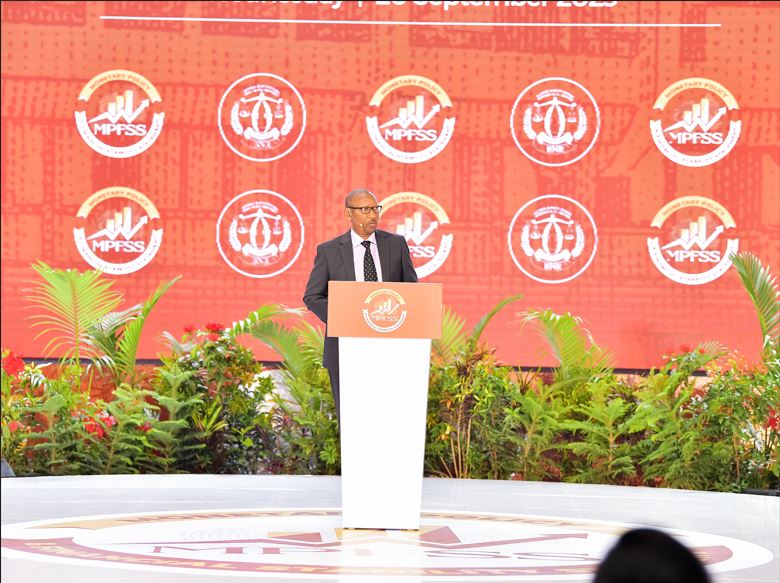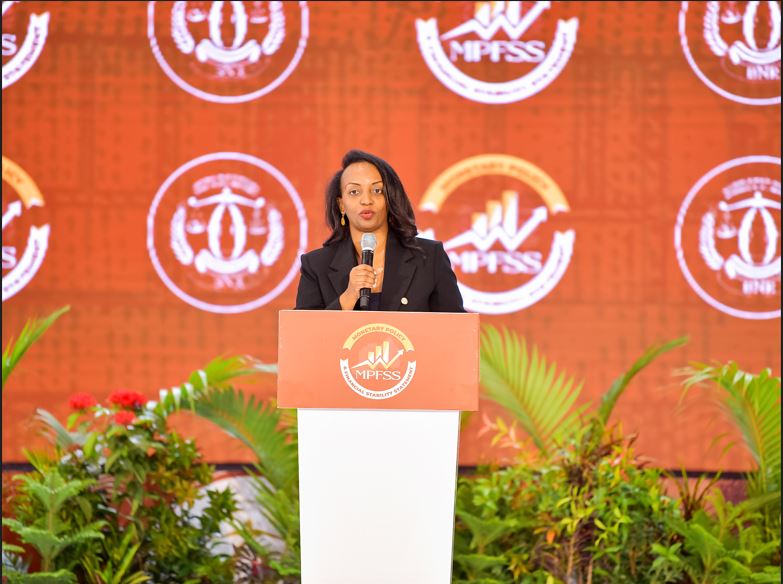
Central Bank Governor John Rwangombwa
The National Bank of Rwanda (BNR) revealed that Rwanda’s economy has remained resilient in the first half of the year, though climate change impacts agriculture and market prices remain the biggest threat.
Central Bank Governor, John Rwangombwa showed that in the first half of 2023 (7.7%) the service sector, the largest economy player, led with 11.3%, growth followed by industry by 7%, while the agriculture sector failed two years in a row with 0.3% growth.
“Unfortunately, agriculture has performed poorly for two consecutive years now. Last year we had poor agriculture performance because of bad weather, same story this year so far the first half we see agriculture growing by 0.3 percent,” Rwangombwa said.
Rwangombwa was this September 20, 2023, presenting the Monetary Policy and Financial Stability Statement (MPFSS)2023 which assessed the economic and financial sector development for of the first half of 2023 and an outlook of the 2nd half and beyond.
The Governor said that this has impacted the current inflation (at 12%) mainly caused by the trade deficit of 23.3% in the first half increasing the forex packet and depreciating the franc by 8.8% against the US dollar.
However, the high growth in import bill (18.5%) has impacted greatly on the exchange market against the good performance in exports (11.2%).
The Central Bank said that in order to ease the pressure on the local currency, it has been injecting more US dollars in the market from over $4million to $10.5milion per week.
On the other hand, the pressures on the reserves have been reduced by the good performance in other private flows such as tourism travels which grew by 44.3%, foreign direct investment (11.2%), and remittances by 11.3%.
Inflation development (projections) show that headline inflation is expected to drop below 12.3% (as of August 2023) to 7.6% by the end of the fourth quarter and drop further to 5% next year.
“That course will depend on how agriculture performs,” Rwangobwa said and explained that the reason why Rwanda’s inflation remains at a double digit is because of the high inflation in fresh food which still remains high despite a significant reduction.

Deputy Governor Central Bank Soraya Hakuziyaremye
Core inflation dropped from 15.4% in December 2022 to 8.4% in August 2023, energy inflation dropped from 19.9% to 3.2% and Fresh food inflation dropped from 50.1% to 29.8% in the same duration.
The last time Rwanda had highest inflation was in 2016 (9.7%).
Rwangombwa said: “Ease on food inflation will be expected in the production season C, maybe in the next month, if possible, but mainly we expect it to go down in November, December when season A starts kicking in,”
As a way to further ease inflation pressure on the monetary policy, BNR has for the last three years increased the repo rate from 4.5% to 7.5% and the interbank rate increased from 5.4% to 8.1% (2022H-2023H1) to enable financial stability as deposit rates also increased from 7.48% to 9.5% (in the same period).
BNR stated that the drop in inflation will be driven by strong Central Bank policy decisions, measures; and government policy to revamp agriculture production but the risk areas remain geopolitics, oil prices, and climate change impact on agriculture.

